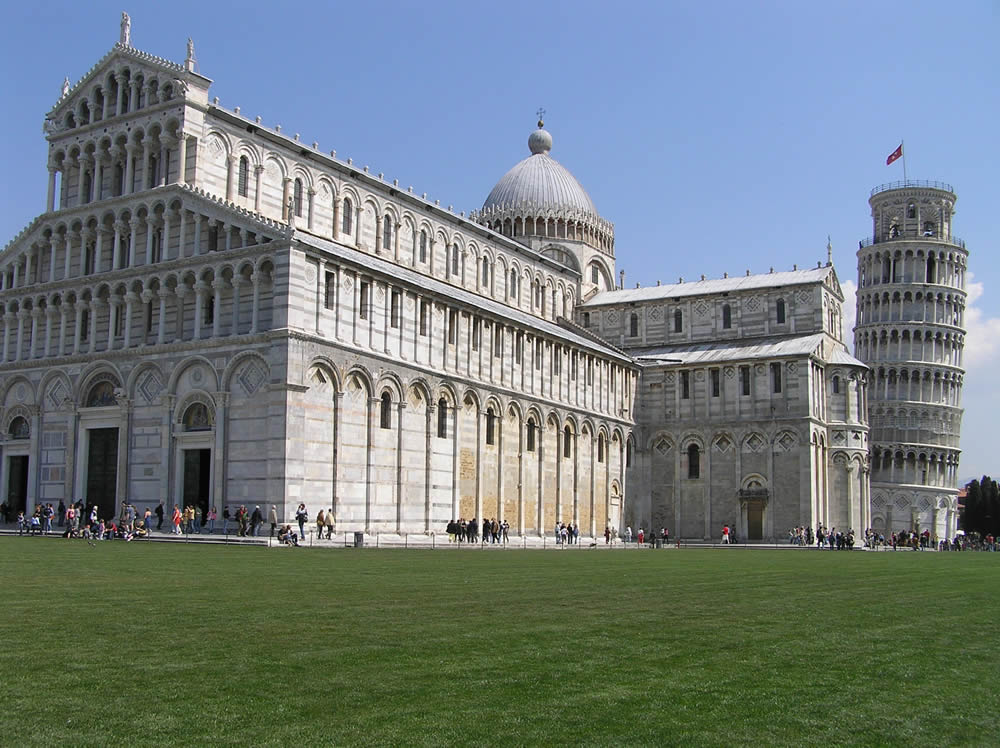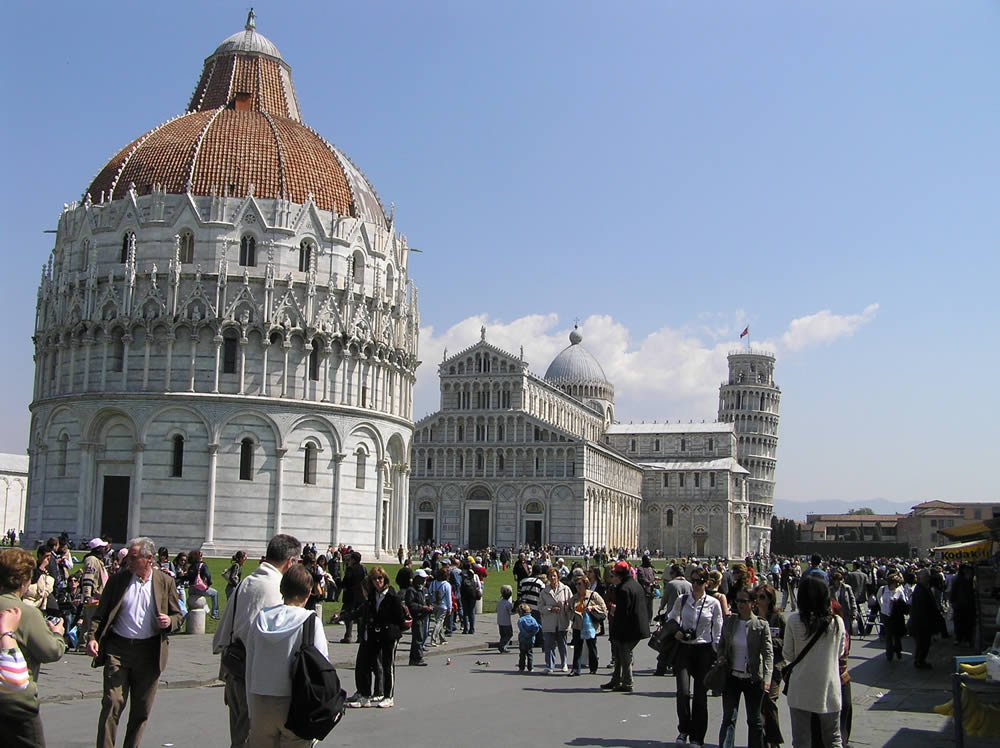Questo articolo è disponibile anche in:
![]() Français
Français ![]() Deutsch
Deutsch ![]() Español
Español ![]() Italiano
Italiano
The Piazza del Duomo of Pisa or Campo dei Miracoli is the main tourist attraction of this Tuscan city. The square has been one of the UNESCO World Heritage Sites since 1987, overlooked by buildings of great artistic value such as the Duomo (Cathedral of Santa Maria Assunta), the Baptistery (dedicated to St. John the Baptist), the Campo Santo monumental and the famous Leaning Tower (the bell tower of the cathedral).
A JEWEL OF MEDIEVAL ARCHITECTURE
The square located in the northern part of the city within the medieval walls, with its buildings and its perspective arrangement, which amplifies the real space, represents the religious center of the city and a masterpiece of medieval architecture.
You enter the square from Porta Santa Maria and you immediately have a wonderful view of the main monuments that characterize it. The contrast between the green of the meadow surrounding the buildings and the white of the marbles that cover them make the place truly spectacular.

THE DOME
The Duomo, a Pisan-Romanesque masterpiece, is the building located in the center of the square, with its marble facade full of columns, marble mosaics and arches, it immediately attracts attention. Built between the 11th and 12th centuries, it has an interior with five naves, there are artistic masterpieces such as the tomb of Arrigo Vi, the pulpit by Giovanni Pisano, mosaics, paintings by Cimabue and Andrea del Sarto.
THE LEANING TOWER
Just behind the Cathedral stands the very famous Leaning Tower built between the 12th and 14th centuries whose construction was never finished due to land subsidence which however decreed its fortune thanks to the inclination of the tower.
THE BAPTISTERY
The Baptistery is another splendid Romanesque monument in the square, also built between the 12th and 14th centuries. It has a circular plan with four portals, inside there are various works of art including a splendid pulpit by Nicola Pisano.
THE CAMPOSANTO
The monumental Camposanto of Pisa is a jewel of Gothic art, built in the XIII century, it has a rectangular plan with a portico. Inside there are masterpieces of Roman art including wonderful sarcophagi, medieval frescoes by artists such as Benozzo Gozzoli, Taddeo Gaddi, Buffalmacco, Spinello Aretino, Andrea di Bonaiuto, Piero Puccio etc. Unfortunately part of the frescoes in the Camposanto have been irreparably damaged by a bombing suffered during the Second World War.
Questo articolo è disponibile anche in:
![]() Français
Français ![]() Deutsch
Deutsch ![]() Español
Español ![]() Italiano
Italiano

